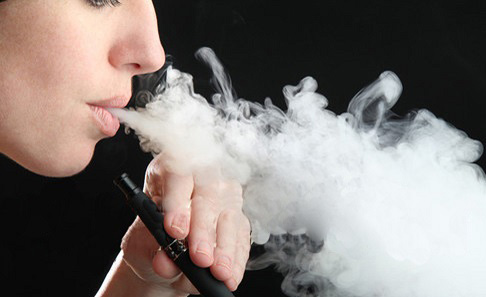There have been so many methods that try to get people to stop smoking. Anti-smoking campaigns, fear appeals, nicotine patches, gum and sheer will pow
There have been so many methods that try to get people to stop smoking. Anti-smoking campaigns, fear appeals, nicotine patches, gum and sheer will power just to name a few.
But there are reports confirming from numerous sources, that e-cigs have become the most effective and popular method of smoking cessation in the UK.
Unlike other methods of smoking cessation and nicotine replacement therapies, vaping actually mimics the act of smoking, whilst maintaining the users supply of nicotine.
But what are the health benefits and worries of vaping? The majority of mainstream science appears to continually and willingly absolve e-cigarettes frequently, despite fierce and probing regulation politically.
Firstly, an e-cigarette is an electronic device that vaporises a flavoured e-liquid, which the user inhales to experience the sensation of smoking. It has helped thousands quit in the UK, and there are an estimated 2.6 million users.
The whole “vaping in the NHS” thing was initiated by Public Health England’s claim that e-cigs are around 95% safer than regular tobacco, as they do not nearly contain the same amount of harmful chemicals.
E-cigs are now widely available from the internet, and many retailers sell a wide range of e-cig kits, mods, e-liquids, tanks and accessories.
In terms of scientific studies which have been physically exacted in a controlled environment, most seem to point in favour of using e-cigs as a method of stopping smoking.
In 2015, a highly capable team comprised of British American Tobacco and the MatTek Corporation officials created a smoking robot, and then exposed lung cell replicas to tobacco smoke, vapour from two e-cigs and fresh air.
Tellingly, the lung cells were destroyed by tobacco smoke, but were unmoved by e-cig vapour and air. Meaning, there is little difference between the damage to lung cells caused by e-cig vapour and fresh air.
Similarly, another study conducted by British American Tobacco determined that e-cig vapour does not cause oxidative stress in viable lung epithelial cells, but tobacco smoke does.
Moreover, it has been found that vaping indoors most likely does not cause damage to bystanders, despite fears from the wider community.
E-liquid, the substance that is heated and inhaled by the vaper, is typically comprised of propylene glycol, vegetable glycerine, nicotine and flavouring.
Propylene glycol is an odourless liquid, which is mixable with water and is often used in smoke machines, air conditioning units, moisturisers, shampoos and more. In other words, we’re often exposed to propylene glycol.
Vegetable glycerine is often used as a food-thickening agent, as well as by medicine and pharmaceutical industries.
However, nicotine is a harmful and addictive substance that is prominent in e-liquid. Nicotine can damage the heart, arteries and lungs, increasing the chances of heart attack, stroke and lung disease.
There are vaping methods that do not contain nicotine, and they’re widely available from e-cig stores that sell e-liquid today.
Many criticisms of e-cigs from legislators and some marginalised science personnel refer to a kind of normalisation of smoking or gateway to tobacco. However, the Royal College of Physicians have disproven and quashed such claims.
The conclusion appears to be, at least from a scientific point of view, that e-cigs are healthier than e-cigs and are a good method of smoking cessation. However, they’re still an addiction, and should be used to help people quit and improve their health, rather than to use as a hobby.
Fortunately, a European study into smoking habits found minimal e-cig use among non-smokers.



















































































































COMMENTS